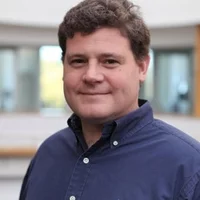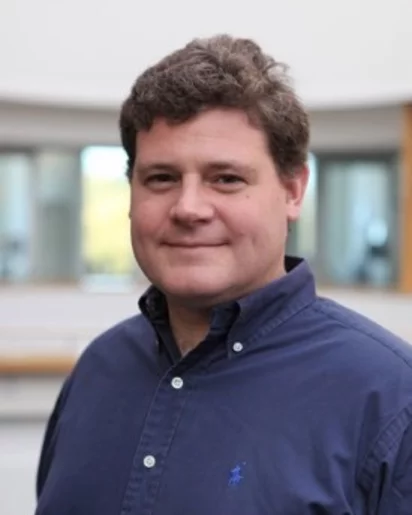Professorships
Biography
Adrian Cavalieri holds a joint position in the Institute of Applied Physics at the University of Bern and the Paul Scherrer Institute. At PSI he is the Head of the Laboratory for Non-linear Optics (LNO), which is primarily tasked with providing optical laser light for operation and experimental applications at the Swiss X-ray Free-electron Laser SwissFEL. LNO plays a leading role in optical and X-ray laser development, and is also active in independent research projects in nonlinear optics with diverse applications spanning materials research to the life-sciences.
Cavalieri moved to Switzerland in January 2019 from the Max Planck Institute for the Structure and Dynamics of Matter and University of Hamburg in Germany where he developed and applied table-top attosecond and large-scale free-electron laser sources to study ultrafast dynamics at extreme timescales. Prior to that, he was a researcher at the Max Planck Institute of Quantum Optics in Garching, Germany. He received his PhD in Applied Physics from the University of Michigan, Ann Arbor and his B.S. in Engineering Physics from Cornell University.
At SwissFEL, Adrian is currently working to advance X-ray free-electron lasers to the attosecond regime with fully coherent X-rays. He also develops new experimental approaches to exploit these pulses in time-resolved research in atomic, molecular and condensed matter systems. In the laboratory at PSI and the University of Bern he performs research in nonlinear optics using ultrafast table-top laser sources.
Institutional Responsibilities
Ensure fulfilment of key requirements for optical lasers and associated technologies in the Photon Sciences Division, as well as for other divisions at PSI. To provide optical laser light to generate electrons for acceleration in the Swiss X-ray Free-electron laser (SwissFEL). Deliver conventional laser light for experimental applications at SwissFEL. Further develop optical and X-ray laser technology and applications and actively pursue independent research in non-linear optics.
Scientific Research
Cavalieri’s research is split between the emerging field of ultrafast x-ray science at X-ray free-electron lasers and ultrafast science performed in the laboratory with table-top sources. During his career, he has pioneered the application of new optical and X-ray laser sources to atomic, molecular and condensed matter research. He worked to overcome timing jitter between lasers and electron accelerators, enabling time-resolved X-ray diffraction experiments to observe phase transitions and other lattice dynamical phenomena with a resolution of a few tens of femtoseconds. He went on to demonstrate the first scientific application of attosecond XUV pulses to condensed matter research, timing the photoelectric effect in metals. As a professor at the University of Hamburg and an research group leader at the Max Planck Institute for the Structure and Dynamics of Matter, he developed techniques to detect and shape free-electron laser X-ray pulses for high peak power applications, from single molecule imaging to nonlinear attosecond x-ray science.
Currently, he is developing new X-ray emission modes at SwissFEL, which include high intensity soft-X-ray attosecond pulses and phase-locked attosecond pulse trains. These advances are enabled by seeding the driving electron bunch with an optical laser pulse, imprinting the temporal coherence properties on the X-ray emission. As future experimental applications will rely on locking the attosecond X-ray emission to an external laser-field used for excitation, Cavalieri has concurrently been pioneering a new class of experiments based on self-referenced photoelectron spectroscopy.
In the laboratory at PSI and the University of Bern, he continues work in the fields of ultrafast and attosecond science using table-top laser systems to study charge transfer and driven phase-transitions in condensed matter systems. Most recently he has been working to apply ultrafast lasers in a new class of immunoassay based on viral-laser detection. The method uses stimulated emission from chromophores conjugated to synthetic nanoparticles together with the viral material or antibody to signal their presence. The assay may be useful in combatting the current Corona-pandemic as well as potential outbreaks that may emerge in the future.
Selected Publications
For an overview of PSI affiliated publications we kindly refer you to our publication repository DORA
Clocking Auger electrons
D.C. Haynes, M. Wurzer, A. Schletter, A. Al-Haddad, C. Blaga, C. Bostedt, J. Bozek, Bucher, A. Camper, S. Carron, R. Coffee, J.T. Costello, L.F. DiMauro, Y. Ding, K. Ferguson, I. Grguras, W. Helml, M.C. Hoffmann, M. Ilchen, S. Jalas, N.M. Kabachnik, A.K. Kazansky, R. Kienberger, A.R. Maier, T. Maxwell, T. Mazza, M. Meyer, H. Park, J.S. Robinson, C. Roedig, H. Schlarb, R. Singla, R. Tellkamp, K. Zhang, G. Doumy, C. Behrens, Cavalieri A.L.,
Intense X-ray free-electron lasers (XFELs) can rapidly excite matter, leaving it in inherently unstable states that decay on femtosecond timescales. The relaxation occurs primarily via Auger emission, so excited-state observations are constrained by Auger decay. In situ measurement of this process is therefore crucial, yet it has thus far remained elusive in XFELs owing to inherent timing and phase jitter, which can be orders of magnitude larger than the timescale of Auger decay. Here we develop an approach termed ‘self-referenced attosecond streaking’ that provides subfemtosecond resolution in spite of jitter, enabling time-domain measurement of the delay between photoemission and Auger emission in atomic neon excited by intense, femtosecond pulses from an XFEL. Using a fully quantum-mechanical description that treats the ionization, core-hole formation and Auger emission as a single process, the observed delay yields an Auger decay lifetime of 2.2-0.3+0.2 fs for the KLL decay channel.
Femtosecond profiling of shaped X-ray pulses
M.C. Hoffmann, I. Grguras, C. Behrens, C. Bostedt, J. Bozek, H. Bromberger, R. Coffee, J.T. Costello, L.F. DiMauro, Y. Ding, G. Doumy, W. Helml, M. Ilchen, R. kienberger, S. Lee, A.R. Maier, T. Mazza, M. Meyer, M. Messerschmidt, S. Schorb, W. Schweiberger, K. Zhang, A.L. Cavalieri, New Journal of Physics 20, 033008 (2018), Affiliated to Max-Planck Institute for the Structure and Dynamics of Matter, Hamburg; University of Hamburg
In this work, we demonstrated our ability to tune and observe the temporal profile of femtosecond hard X-ray free-electron laser pulses. Pulse shaping was achieved her by manipulating the driving
electron bunch and temporal characterization performed by photoelectron streaking. This was the
first time that a controlled structure was verified in the emitted X-ray photon pulse on a single-shot
basis, which is essential for all experimental applications. The tools and methods described in this
work enable future techniques that will combine similar beam-based manipulation with direct
photon-based X-ray pulse shaping.
Femtosecond all-optical synchronization of an X-ray free-electron laser
S. Schulz, I. Grguras, C. Behrens, H. Bromberger, J.T. Costello, M.K. Czwalinna, M. Felber, M.C. Hoffmann, M. Ilchen, H.Y. Liu, T. Mazza, M. Meyer, S. Pfeiffer, P. Predki, S. Schefer, C. Schmidt,
U. Wegner, H. Schlarb, A.L. Cavalieri, Nature Communications 6, 5938 (2015) Affiliated to Max-Planck Institute for the Structure and Dynamics of Matter, Hamburg; University of Hamburg
In this paper, the first all-optical synchronization of a large-scale, accelerator-driven free-electron laser is reported. Facility-wide synchronization, including external laser sources, to within a fraction of the FEL pulse duration was achieved, obviating the need for relative timing measurements in most
experimental applications. Based on these measurements, performance to the sub-10 femtosecond
level is expected in the future. Additionally, improved stability and control over the FEL emission is observed due to more precise synchronization between the individual accelerator components.
Ultrafast X-ray pulse characterization at free-electron lasers
I. Grguras, A.R. Maier, C. Behrens, T. Mazza, T.J. Kelly, P. Radcliffe, S. Duesterer, A.K. Kazansky, N.M.
Kabachnik, Th. Tschentscher, J.T. Costello, M. Meyer, M.C. Hoffmann, H. Schlarb, A.L. Cavalieri,
Nature Photonics 6, 851-856 (2012) Affiliated to Max-Planck Research Department for the Structural Dynamics, Hamburg; University of Hamburg
In this work, we show how the arrival time and pulse temporal profile of X-ray free electron laser
pulses can be determined simultaneously through time-resolved photoelectron spectroscopy using
single-cycle THz pulses for streaking. In this initial demonstration, the arrival time of the FEL pulse
was measured with better than 10 femtoseconds accuracy, and the pulse profile was measured with
better than 50 fs resolution. Simultaneous access to the pulse profile is crucial for intensity dependent experiments, as the pulse profile was found to vary dramatically from shot to shot.
Intense 1.5-cycle near infrared laser waveforms and their use for the generation of ultrabroadband
soft-x-ray harmonic continua
A.L. Cavalieri, E. Goulielmakis, B. Horvath, W. Helml, M. Schultze, M. Fiess, V. Pervak, L. Veisz, V.S. Yakovlev, M. Uiberacker, A. Apolonski, F. Krausz, R. Kienberger, New J. Phys. 9, 242 (2007) Affiliated to Max-Planck-Institut für Quantenoptik & Department für Physik, Hamburg; University of Hamburg
We developed and implemented a hybrid compression scheme for our standard ~ mJ Ti:Sapphire
amplifier allowing us to spectrally broaden our HHG drive laser pulse through self-phase modulation
to more than an octave of bandwidth. We achieved final compression to ~ 1.25 optical cycles leading
to dramatic enhancement of the HHG XUV emission characteristics, including extension of the XUV
photon continuum and cut-off energy, as well as extreme sensitivity to the carrier-envelope phase.
Attosecond spectroscopy in condensed matter
A.L. Cavalieri, N. Müller, Th. Uphues, V. S. Yakovlev, A. Baltuska, B. Horvath, B. Schmidt, L. Blümel, R. Holzwarth, S. Hendel, M. Drescher, U. Kleineberg, P.M. Echenique, R. Kienberger, F. Krausz, U. Heinzmann, Nature 449, 1029–1033 (2007) Affiliated to Max-Planck-Institut für Quantenoptik, Garching; Institut für Experimentalphysik, Universität Hamburg
Here, we demonstrate the first application of attosecond XUV pulses to condensed matter, clocking the photoelectric effect in metals. In the experiment we found that in tungsten, conduction band photoelectrons were emitted ~110 attoseconds before 4f core-level photoelectrons. The delay could not be explained using ballistic transport models alone, indicating that properties of the excited upper state conduction bands could be probed using attosecond spectroscopy.
Books
POPULAR ARTICLES:
Beyond Ultrafast
A.L. Cavalieri
Physics World, 23, 47-51 (2010)
BOOK CHAPTERS:
Attosecond time-resolved spectroscopy at Surfaces
A.L. Cavalieri, F. Krausz, R. Ernstorfer, R. Kienberger, P. Feulner, J.V. Barth, D. Menzel
Dynamics at Solid State Surface and Interfaces Vol. 1, U. Bowensiepen, H. Petek, M. Wolf, Wiley, Weinheim, Germany, (2010).


